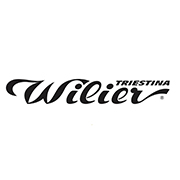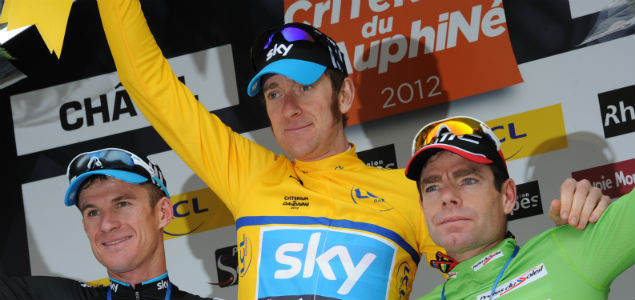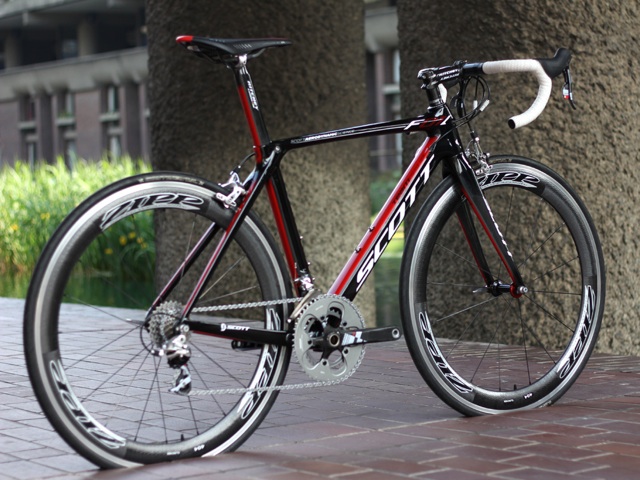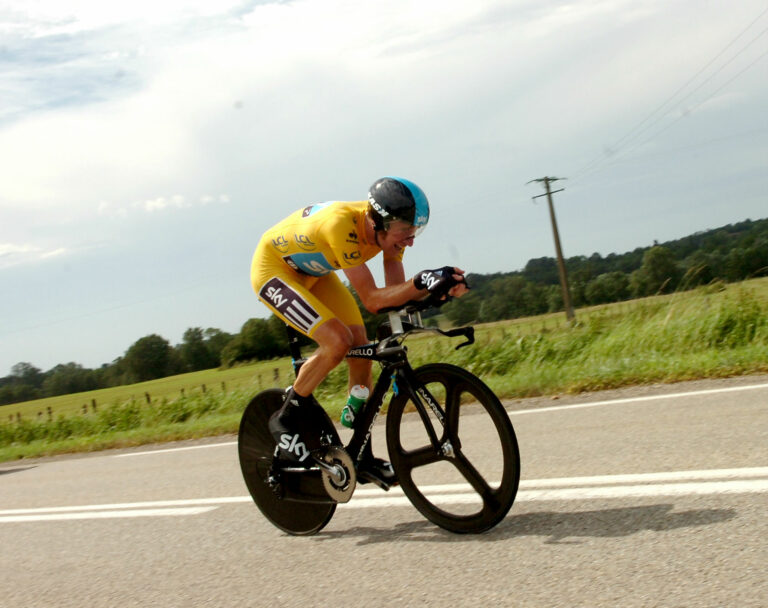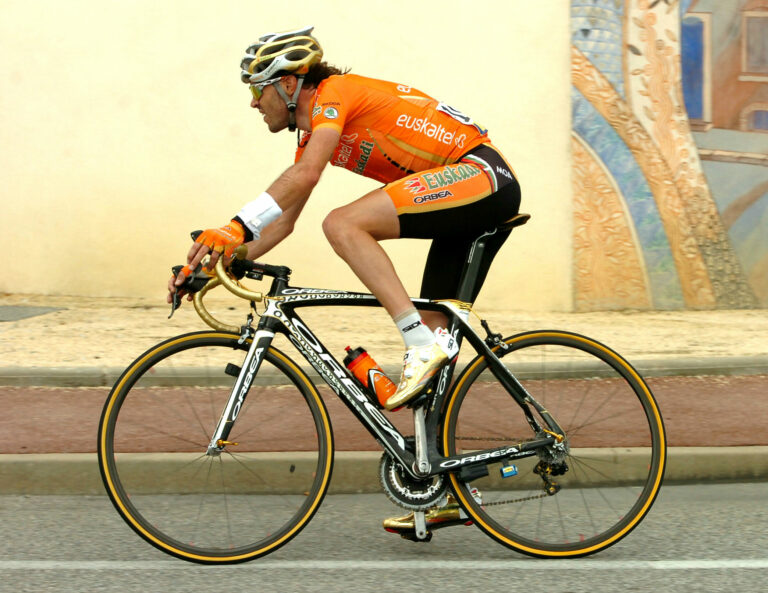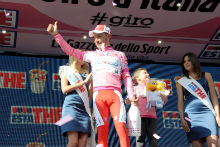The Zero 7 is the flagship model of Italian manufacturer, Wilier, a brand that has been building bikes for 106 years.
The frame is made from high modulus carbon, which Wilier say will resist up to 60 tonnes. Our tests didn’t expose it to such pressures, but for a machine this light (799 grams for a painted, medium frame, with each purchaser given a certificate guaranteeing its weight) the knowledge was reassuring.
The Zero 7 is a machine as quick as thought, one that responded unhesitatingly to changes of pace and direction. Our test pilot attacked local Strava records with abandon, achieving 50kmh on a flat road with relative ease, scything through the traffic with an unflinching confidence inspired by the machine’s ability to respond as if guided telepathically.
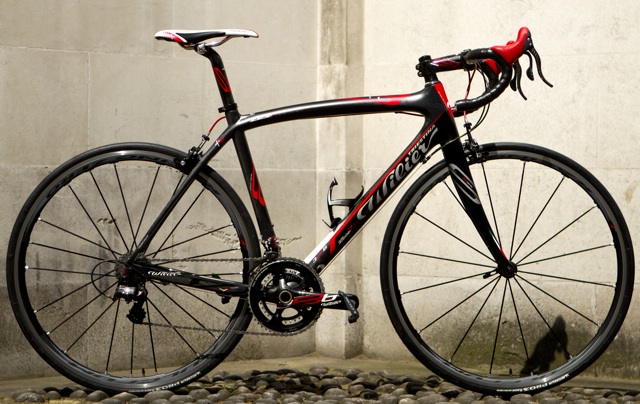
Ascending, the Zero 7 is every bit as good as you would imagine from a bike so tailored to climbing that only Cunego and Scarponi among the Lampre-ISD squad are issued with them (and theirs are weighted for UCI compliance). There is something almost revelatory about climbing with a bike you barely notice is beneath you. The sensation of power through the pedals being converted almost entirely to forward motion was a new one for us. After a winter encumbered by a faithful, but weighty steel steed, it was rewarding indeed.
The ride on the flat is impossibly fast. ‘Ridiculous’ is a word not usually offered as a compliment but one that was bandied with unusual frequency among the salivating riding colleagues granted a spin on the Zero 7, most often in relation to the bottom bracket, the 386 unit designed in conjunction with FSA (30mm diameter bearing, 86mm wide shell). Every manufacturer claims a flex free bottom bracket. This is the first we’ve ridden.
The bulky shell of the bottom bracket aside, the Zero 7 is modestly proportioned by the standards of modern carbon frames. Absent, for example, is the drain pipe down tube of some of its competitors; the head tube is large, but not outlandish. Conversely, the box section seat stays are not quite as spindly as, say, those on Cervelo machines of similar pedigree (interestingly, the Zero 7 was Wilier’s response to the ‘super lightweight’ arms race started by the Canadian firm’s Project California). The non-drive side chain stay, box section again, is notably larger than its partner, but doesn’t appear exaggerated. The riveted cable guides rather let the side down, though; internal routing we felt would have done greater justice to a machine of this pedigree.
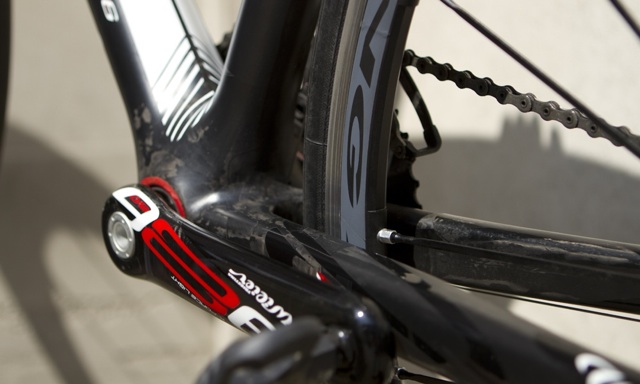
An impressive achievement is the degree to which the frame’s stiffness is located in its lower portion, delivering an unexpected level of comfort for a machine designed purely to travel quickly. This, perhaps, is where some of the £3999 required to purchase such a frame is invested: in the skill of the engineers. A 106-year history and WorldTour clientele aside, evidence that Wilier know something about building bicycles can be found in the quality (in every sense) of the ride. They would also point to the Special Elastic Integrated film, a ‘viscoelastic’ material surrounding the fibres. While it hasn’t supplanted steel or titanium on our list of materials we’d choose to ride all day, the Zero 7 was a good deal easier on the human frame than we’d expected of a bike used by professional riders.
How do you dress a £4,000 Italian frameset? Why, in Campagnolo Super Record 11, of course. We won’t start a separate eulogy here, but Campag’s thumb shifter is the most ergonomically intuitive of any of the Big Three’s designs, and the modulation of the brakes was a different class to anything we’d previously experienced.
The shiny carbon cockpit came from FSA and the wheels from Fulcrum (Zeros, naturally enough). Interestingly, the wheelset offered one of the few opportunities for further weight saving on the build supplied by UK importers, ATB Sales. As the Zero 7 departs RCUK Towers, carbon hoops from Smart ENVE and Reynolds are set to arrive, leaving us to rue what might have been.
Finally, the colour. Our Zero 7 came in black and a suitably flamboyant shade of red, the right and natural colour for high performance Italian machinery, we’d say. The alternative is the black and high viz yellow recently seen beneath Damiano Cunego in Sunday’s fifteenth stage of the Giro, to our eyes the less attractive option. RCUK 1 – Cunego 0.

